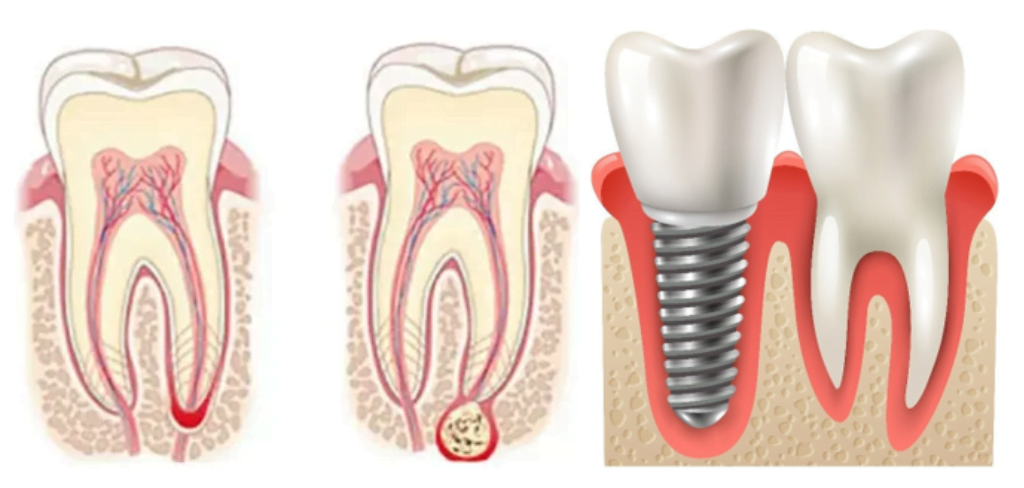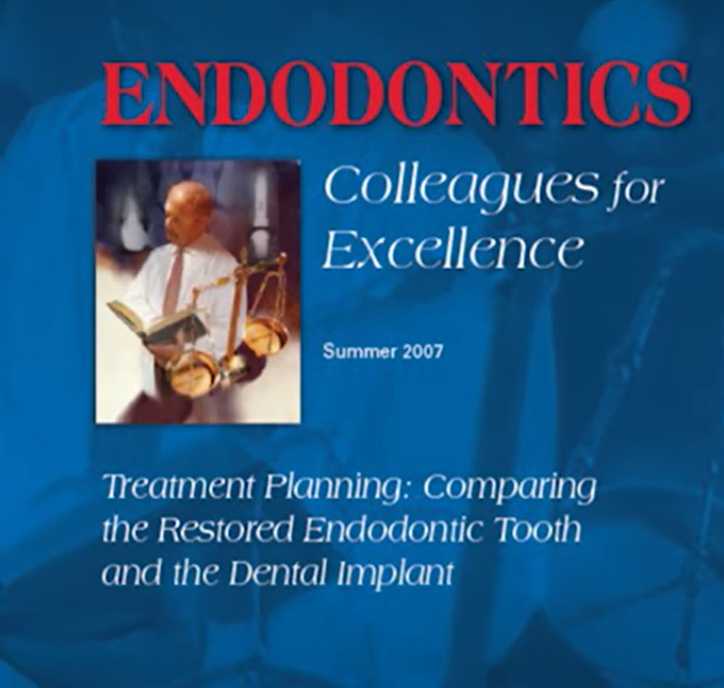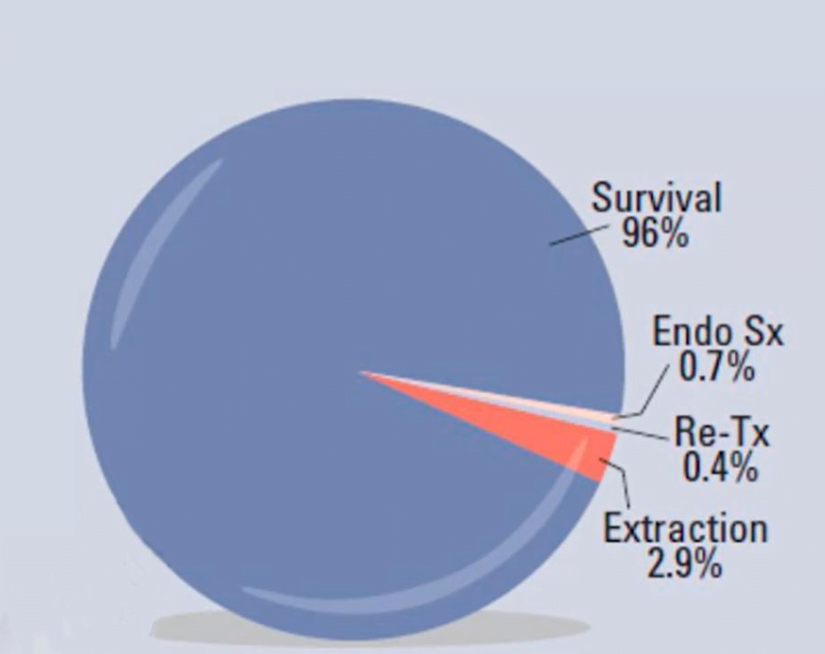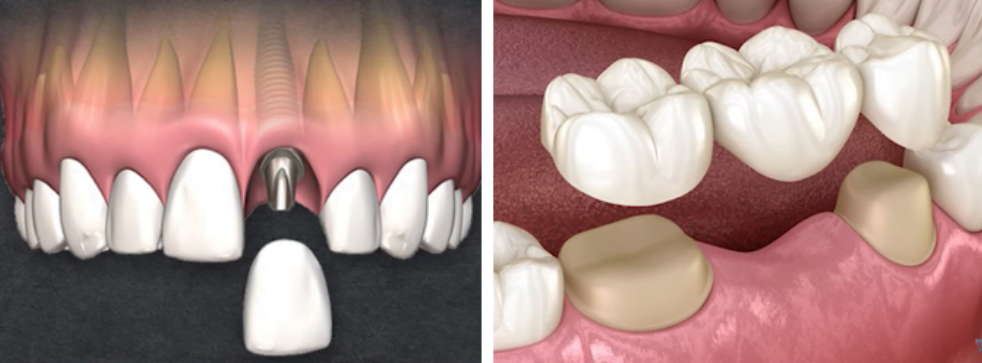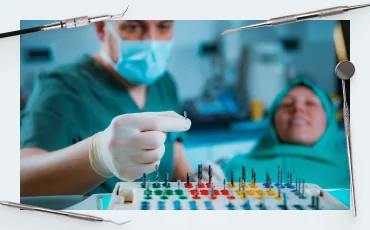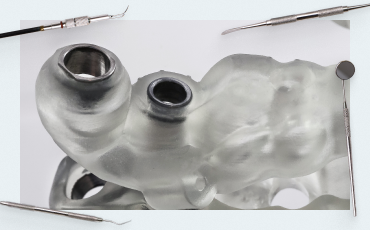What is better, a tooth or an implant? Part 2
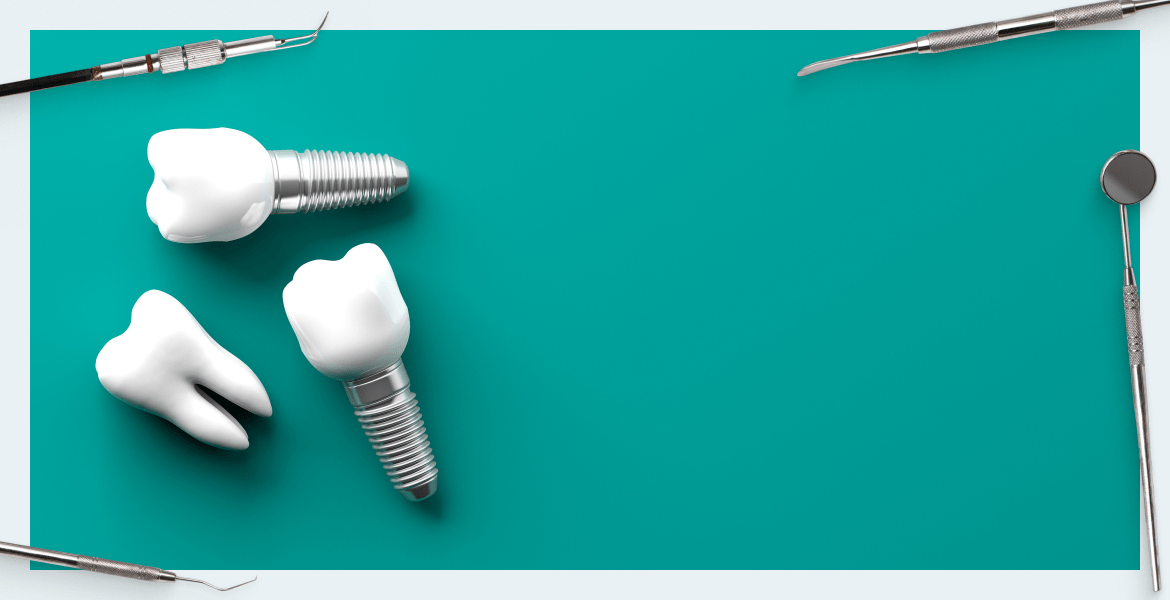
In the first part of this article, we described the disadvantages and loss of important properties of a dental implant compared to a living tooth. The focus was on comparing a healthy tooth with an implant. Of course, no one would think of removing a healthy tooth to replace it with an implant. Our task is to focus on borderline cases, when a specialist is faced with the question of extracting a tooth or treating both root canals and restoring a tooth. Quite often extraction and restoration is the right decision. Let's go into more detail with the help of statistics and research results.
Comparison of the prognosis of implant and endodontic treatment of a tooth
The most common indications for extraction are endodontic or periodontal problems with the tooth. The main problem is that more and more often dentists decide to remove teeth and place implants, regardless of the complexity of the case and the realistic prognosis for successful endodontic treatment. In fact, the certainty that an implant is a great tooth replacement in all cases is false. Yes, modern implant protocols are good and produce positive results in the vast majority of cases.
However, few people pay attention to what the prognosis is for successful pulpitis and periodontitis treatment while maintaining a living tooth. To that end, we found some studies to see what the science and statistics say about it. The studies compared the long-term prospects of teeth with endodontic problems with proper treatment and implant placement.
In 2007, the U.S. Association of Endodontists sent out about 50,000 copies of a brochure, see cover photo below. The primary audience was general dentists, as the largest group that makes decisions to treat or extract a tooth every day.
It is noteworthy that the cover depicts a doctor in a robe in front of the scales. This image resonates with the justice system, where the doctor simultaneously plays the role of prosecutor, lawyer, and judge. There has been a tendency recently to treat the problem tooth mercilessly, and the decision to extract is made more often than is clinically dictated.
Our task is to restore balance and determine the limits of what is possible for conservative root canal therapy and other problems. By no means are we going to call for the rejection of implantation, because often it is indeed a justified decision.
Let’s return to the content of this brochure. There are eight years’ of surveillance statistics for 1,463,936 clinical cases of endodontic treatment in 50 states of the United States. Statistics provided by Delta Dental insurance, see chart below.
The fact that statistics from insurance companies were taken, rather than direct medical research, is particularly interesting. After all, the strength of the insurance company is accounting and statistics, as well as the standardization of record keeping. Records for clinical cases related to insurance medicine are kept more thoroughly and checked much more often than in cases involving a patient without insurance. In this case, obtaining such a large sample of objective data in another way would be problematic.
So, the insurance company has paid for almost a million and a half cases of endodontic treatment. As a result we see that the success rate of root canal treatment in teeth over eight years was 96%. This means that during the entire period of observation, patients’ teeth did not require any re-interventions. Of course, there are some inaccuracies in these statistics. For example, if you treat the primary pulpitis, and 4-5 years later the patient develops a granuloma, then clinically it is only a partial success. From the side of the insurance case is not an insurance case, because the patient has no complaints and symptoms and will fall into the statistics of successful cases. Such cases, however, are rare and could change the given statistics by no more than a couple of percent.
Another qualitative study was done by experts from Minnesota in 2007.


They observed 196 clinical cases of treated root canals and 196 cases of implant placement. The observations lasted from 1993 to 2002. All patients were treated at the university hospital, and the observations were carefully documented. The sample was also as homogeneous as possible, because it would not be correct to compare the clinical picture of a 25-year-old patient without health problems with a 75-year-old patient with a significant set of complicating diseases. Statistical data were processed and calculated using the Kaplan-Maher method, which is also an indicator of the quality of research work.
Over this nearly ten-year period, it was found that the difference in success between implants and endodontically treated teeth was not that significant, see table below.
Result |
Endodontic treatment % |
Dental implant % |
| Success | 82.1 | 73.5 |
| Survival rate without re-intervention | 8.2 | 2.6 |
| Survival rate with intervention | 3.6 | 17.9 |
| Failure | 6.1 | 6.1 |
-
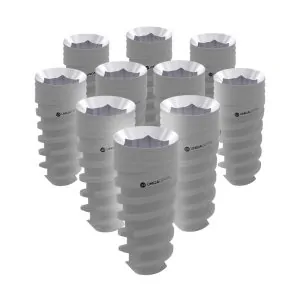
-
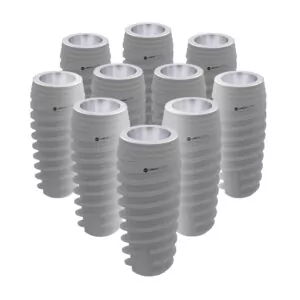
-
Sale!
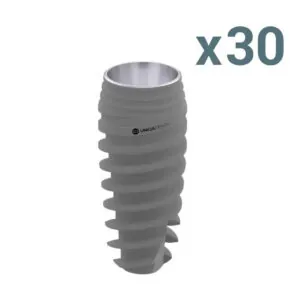
-
Sale!
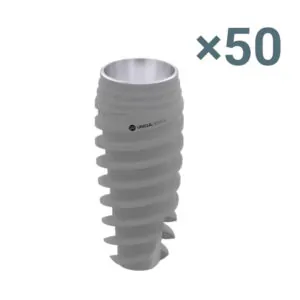
Let us clarify the terms and results. Success in this case means a fully functional tooth without any abnormalities, as confirmed by X-rays, external examination and probe work. When it comes to implant placement, success means a fully functional restoration, with pink gums, no mucositis or gingival bleeding, and also with minimal alveolar ridge resorption in the implant area.
While the success rate of implant surgeries is slightly lower compared to endodontic treatment, the failure rate is exactly the same. In defense of implants, since the research began in the 1990s, implants with a smooth (milled) surface were probably used in many cases. Now, rough-surfaced dental implants are being used everywhere, and the success rate of integrations has increased markedly.
Failure means that the tooth did not survive to the end of the follow-up period and was extracted. As for implants, failure is also the loss of an implant.
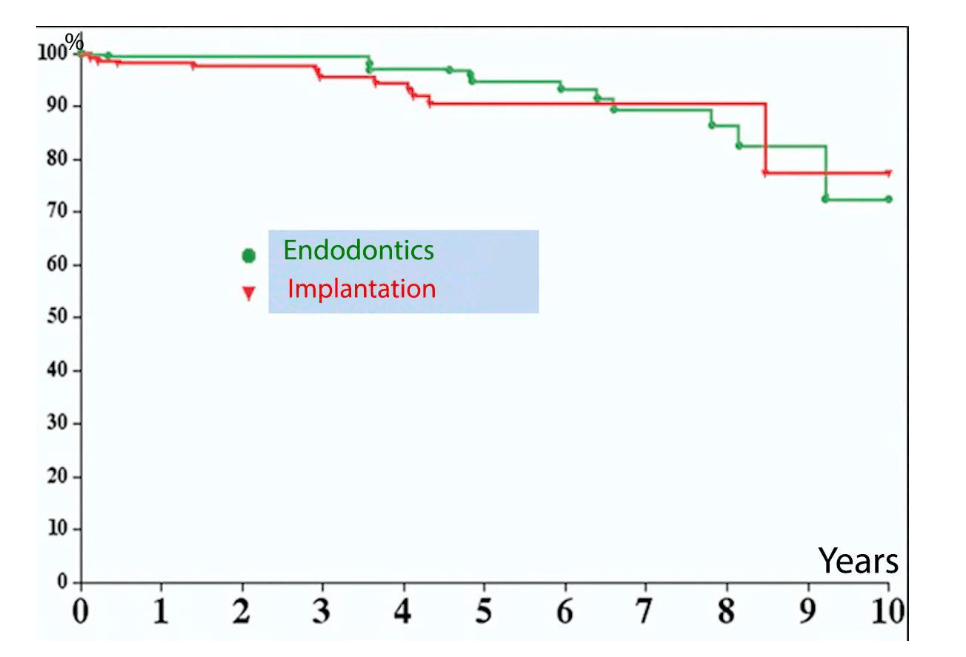
The findings of this study suggest that endodontic treatment and implantation are almost equally effective.
The Role of Physician Experience and Specialization in Endodontic Treatment and Implantation
Let’s move on to the next study, also from 2007 by Dr. Thorabinjad and his group.
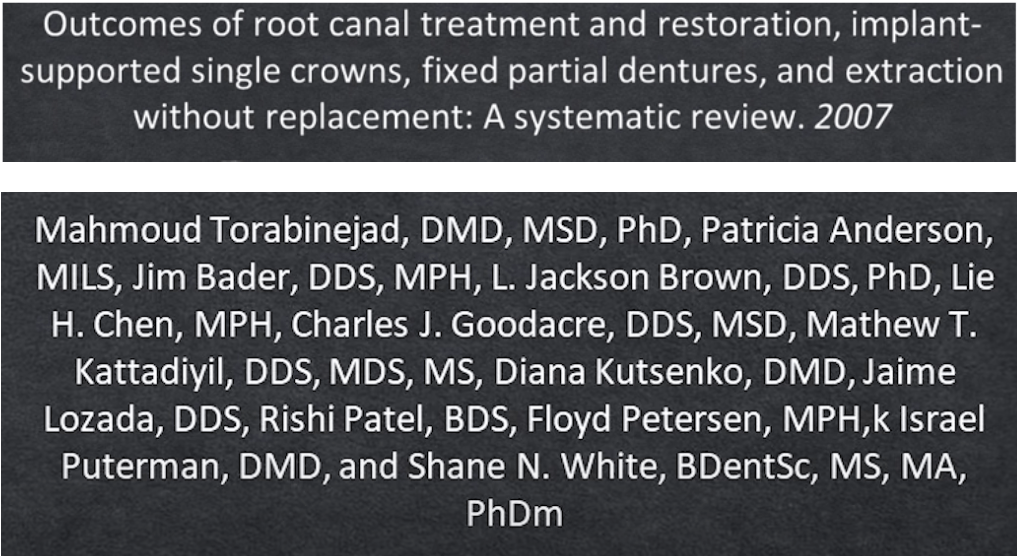
This is one of the best studies, which it is not surprising because Dr. Torabindjad is a well-known endodontist and Dr. Charles Goodyear is an extremely successful prosthodontist and a well-known authority in prosthetics and implant design. Almost the entire group consists of specialists of the same level.
The purpose of this study was to answer the following questions:
- What survives better – implants, teeth, or bridges with fixation on adjacent teeth? As a control, the researchers looked at what happens if the problem tooth is removed and nothing else is done. The collection and analysis of statistical data found that over a six-year or longer time horizon, endodontic treatment was inferior to implantation, see table below. At the same time, the survival rate differs much less.
Monitoring period 6+ years Success % Survival rate % Implants 90 95 Endodontic therapy 84 92 This data is different from the previous study, but its reliability is higher because it is a so-called meta-study. The final sample included the results of 147 studies, and a total of about 7,000 studies were considered whereas in the first case, data were collected for less than 400 clinical cases.
- Which specialists are involved in the treatment of specific cases? Interesting results were obtained, see the following table.
Type of treatment General dentists % Specialists % Implantation 0 87 Orthopedics 29 35 Endodontics 63 29 It transpires that only implant surgeons were involved in implantology, while general dentists were involved in prosthodontic treatment, especially often in endodontic therapy. Subspecialists refer to doctors with basic dental training plus those who have devoted at least three years to in-depth study and practice in a particular discipline. Yes, general dentists also know how to treat root canals and orthopedic problems, but subspecialists are top-notch doctors who can handle even very complex cases and minimize the risk of complications.
The data show that implantation is always handled by extra-class specialists, while endodontic therapy is handled by young specialists, including graduate students, general practitioners, and, of course, subspecialists. If only specialists treated endodontic problems, the success rate would probably be somewhat higher. This means that the difference in success and survival is not so significant, since even in this situation the success statistics are quite comparable. - What is the degree of standardization of techniques and treatment protocols? There is a significant difference here as well. When implants are placed, well-researched brands of implants, abutments, and other accessories are used. Plus a rigorous protocol for all phases of work with well-predictable results. The Minnesota and Tel Aviv doctors have identical instrument sets and follow the same protocol. Whereas endodontic treatment data is most often generalized, and specialists’ actions in similar clinical cases can vary greatly.
- Who evaluated the results? Only 13% of the implantology studies were found to be evaluated by an independent specialist and not by an operator. Whereas the results of endodontic treatment were evaluated by independent researchers in 88% of cases, which makes this data more reliable. After all, we know that even the most conscientious person is not as objective in assessing the results of his or her own work.
In addition, Dr. Torabindjad’s research team found that dental restorations using implants are much more effective in the long term compared to placing a bridge. A bridge refers to a three-unit restoration in which two adjacent teeth are ground down and covered with a full crown.
The advantage of the implant is significant and unequivocal.
The conclusions of this study are as follows:
- If a tooth has a healthy periodontium, but has pulpal or periapical pathology, it is necessary to plan treatment with priority of endodontic therapy.
- If the indication for extraction is unequivocal, for example, there is significant destruction and cracking of the tooth roots, then implantation is the priority method of restoration.
The success and survival rate with this approach will be optimal, as evidenced by the follow-up time of 6 to 10 years.
Let’s turn to another interesting study from 2014 made by the group led by Dr. Kim.
It compared the difference in survival rates and successful treatment depending on how experienced the specialist was, see table below.
| Specialist level | The survival rate of implants, % | The dental survival rate after endodontic treatment, % |
| Extra-Class Specialists | 95.5 | 98.1 |
| Entry-level specialists or general practitioners | 73.0 | 89.7 |
The results were unexpected. It turned out that the success of root canal treatment by endodontists and general practitioners is comparable; the difference was less than 10%, whereas in the case of dental implants the difference was 22%.
That’s good news. It means that endodontic treatment is easier to implement and gives good results despite the difference in approach and materials used.
What should determine the choice of treatment option?
Let’s start with what shouldn’t influence a physician’s decision. We are talking about the pressure and almost imposition of the decision to place implants by the giant companies that manufacture implants, abutments and the tools for their placement. Yes, the quality of their products is beyond question, as are the recommended implant placement protocols. However, the goals of the doctor and the commercial company are different. The main interest of the manufacturer is to make a profit, while the doctor should take care of the health and interests of the patient.
UNIQA DENTAL is also a manufacturer, but our position is slightly different, we do not market aggressively, we do not ask for our products to be placed where they are needed and where a conservative treatment can be managed. UNIQA DENTAL is dedicated to developing and manufacturing the highest quality implants, abutments and other accessories. It is the precision in manufacturing parts as well as quick access to our products when they are really needed that are the key goals of UNIQA DENTAL.
Back to the recommendations that can be reduced to the following:
- If there is an opportunity to save a tooth, you need to take it. If there are doubts involve more experienced colleagues for consultation. The second opinion, especially when it is the opinion of a narrow specialist with a great experience, can fundamentally change the treatment plan. This will benefit both the patient and the doctor treating him.
- If the tooth needs to be extracted, the best way to restore it is to insert root implants. This should not be delayed for too long, because a significant bone deficit may be experienced within a few years after losing a tooth.
In the next part, we will discuss the prognosis for the survival rate of teeth with periodontal disease and compare the effectiveness of conservative treatment with extraction and subsequent placement of a dental implant.

